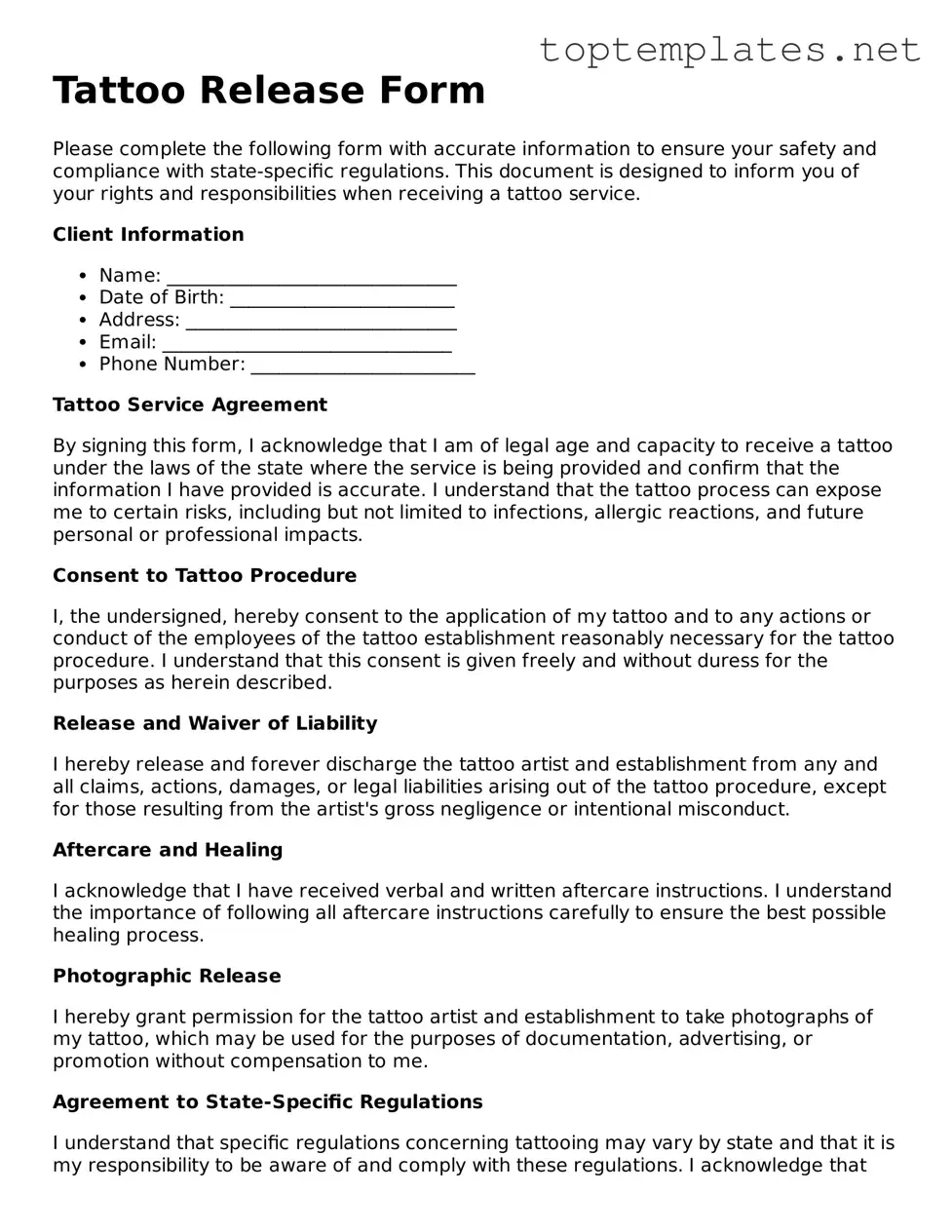Tattoo Release Form
Please complete the following form with accurate information to ensure your safety and compliance with state-specific regulations. This document is designed to inform you of your rights and responsibilities when receiving a tattoo service.
Client Information
- Name: _______________________________
- Date of Birth: ________________________
- Address: _____________________________
- Email: _______________________________
- Phone Number: ________________________
Tattoo Service Agreement
By signing this form, I acknowledge that I am of legal age and capacity to receive a tattoo under the laws of the state where the service is being provided and confirm that the information I have provided is accurate. I understand that the tattoo process can expose me to certain risks, including but not limited to infections, allergic reactions, and future personal or professional impacts.
Consent to Tattoo Procedure
I, the undersigned, hereby consent to the application of my tattoo and to any actions or conduct of the employees of the tattoo establishment reasonably necessary for the tattoo procedure. I understand that this consent is given freely and without duress for the purposes as herein described.
Release and Waiver of Liability
I hereby release and forever discharge the tattoo artist and establishment from any and all claims, actions, damages, or legal liabilities arising out of the tattoo procedure, except for those resulting from the artist's gross negligence or intentional misconduct.
Aftercare and Healing
I acknowledge that I have received verbal and written aftercare instructions. I understand the importance of following all aftercare instructions carefully to ensure the best possible healing process.
Photographic Release
I hereby grant permission for the tattoo artist and establishment to take photographs of my tattoo, which may be used for the purposes of documentation, advertising, or promotion without compensation to me.
Agreement to State-Specific Regulations
I understand that specific regulations concerning tattooing may vary by state and that it is my responsibility to be aware of and comply with these regulations. I acknowledge that my tattoo artist has provided me with information about state-specific regulations where applicable.
Acknowledgement of Understanding
I have read this entire release form, fully understand its terms, and acknowledge that I am giving up substantial rights, including my right to sue. I acknowledge that I am signing the agreement freely and voluntarily, and intend by my signature for this to be a complete and unconditional release of all liability to the greatest extent allowed by law.
Client's Signature: ___________________________ Date: _______________
Tattoo Artist's Signature: ____________________ Date: _______________
